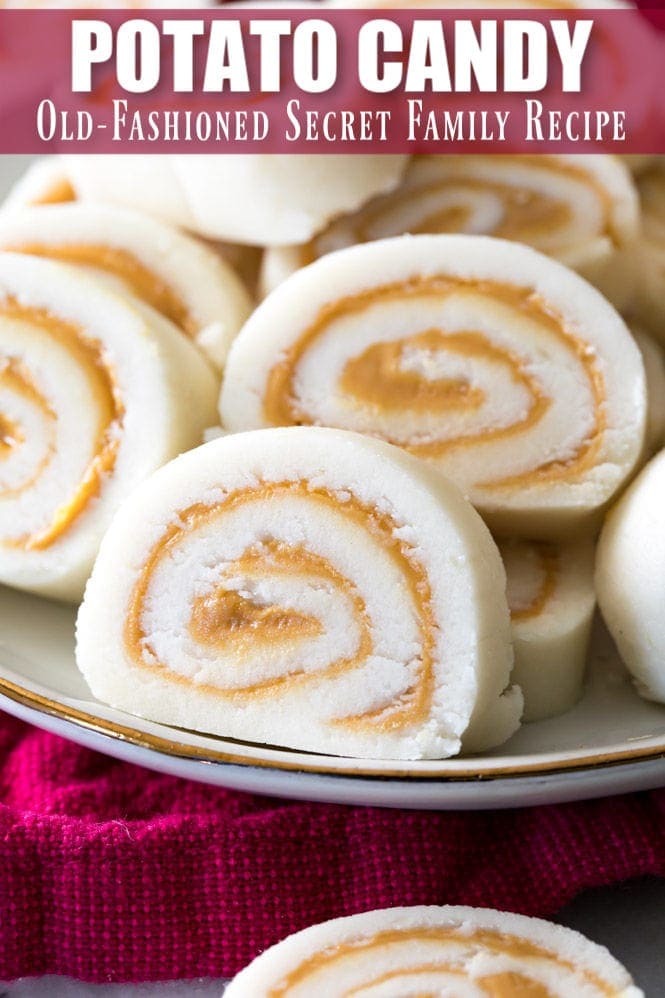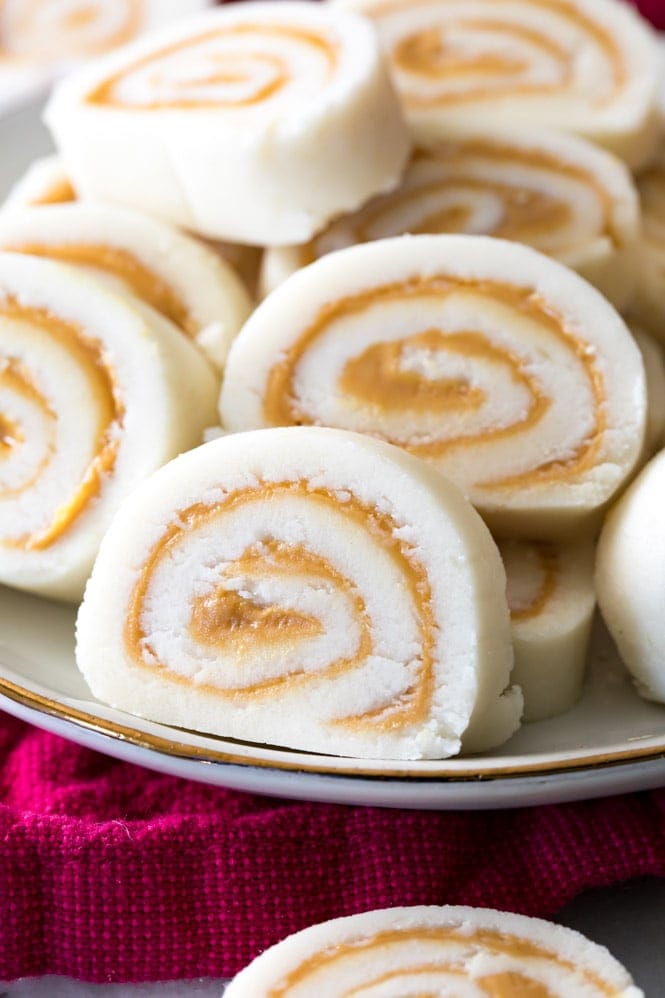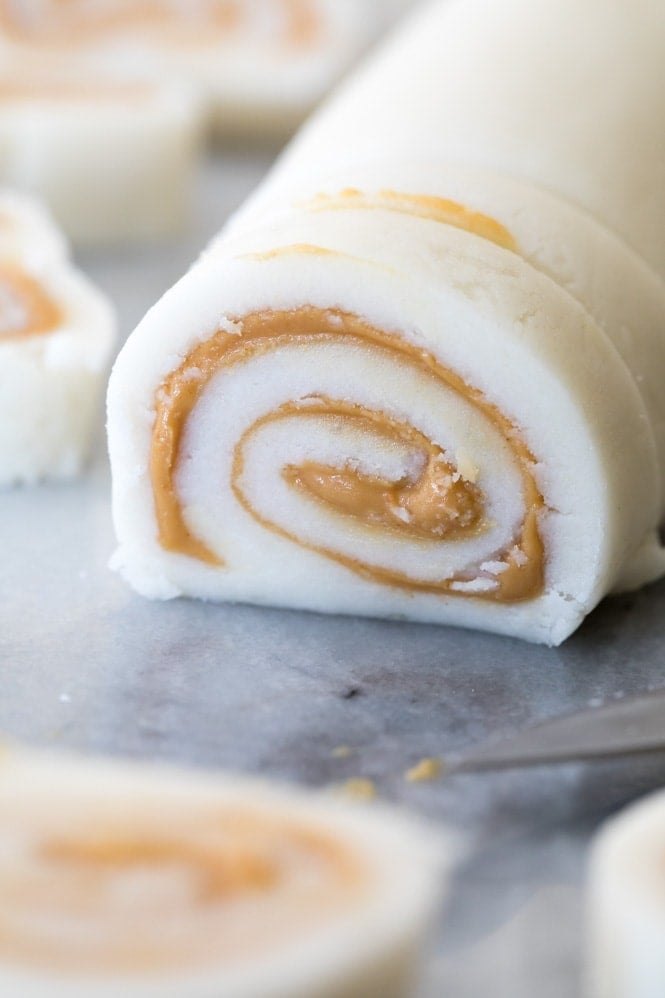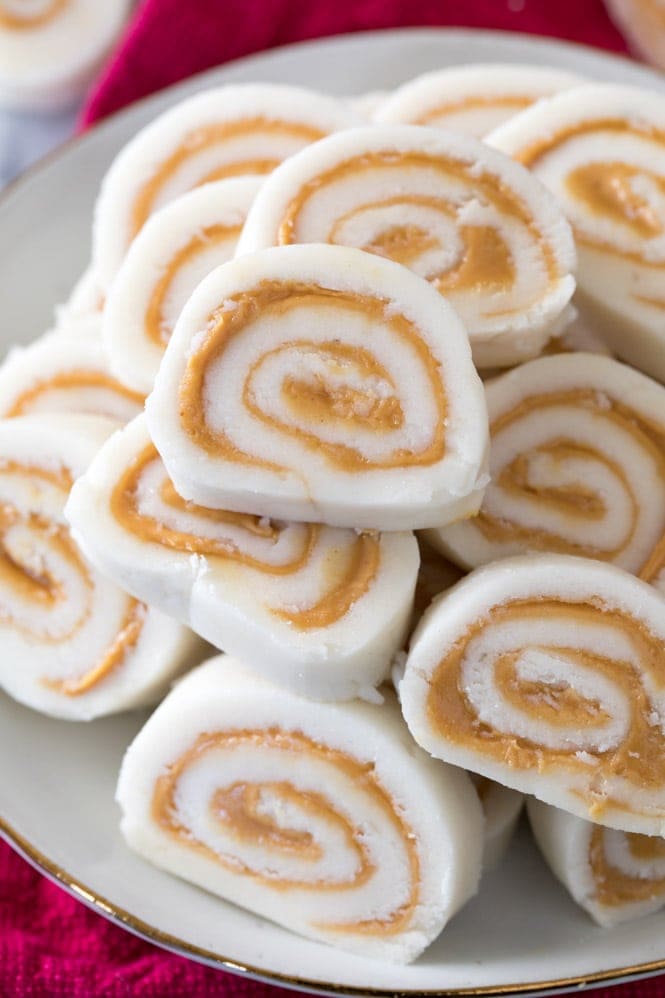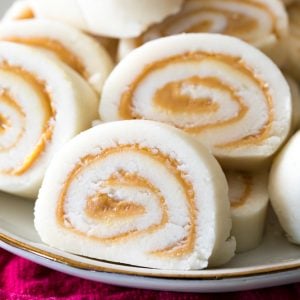My family loves making this potato candy around the holidays, especially for Christmas and Easter. You might even recognize the candy base as I’ve shared it before in my Easter Egg Candy. Be sure to read through the post for all of my most important tips before you begin!
If you’ve read this far you’re either really, really intrigued or you grew up making your own Potato Candy and already know how amazingly delicious this recipe really is. I’m guessing we lost some people with the title, but trust me, they’re missing out. You’re going to be so glad you stuck around (and I’m so grateful for you for trusting me on this one!). This recipe came from my grandmother’s grandmother. While the potatoes may seem off-putting at first, I promise you that you won’t taste them in the finished product. They mostly serve to bind the candy “dough” together, and they do so without making it too sweet (if you left out the potatoes, you’d have a much too sweet buttercream candy that you couldn’t roll into this cute pinwheel shape). I do have lots of tips and tricks for making this recipe, so let’s jump in. I highly recommend you read through this entire post before venturing out to make your own Potato Candy.
Tips for Making Potato Candy
Let the potatoes cool completely. Don’t refrigerate them, just leave them at room temperature once you’ve drained them until they are completely cooled, and then mash them until no lumps remain. If your potatoes are still warm when you add them to your mixture, there’s a good chance they’ll melt your butter and your sugar, resulting in a watery dough that you’ll have to toss out. Add more sugar as needed. The dough will need to chill before you can roll it out, and it will be too tacky when first mixed up, but it should be somewhat shapeable. If it’s too sticky, you can always add more sugar, up to 2 cups more. Dust your surface and your rolling pin with powdered sugar, it will make the whole process easier and your dough less likely to stick.
If the Mixture Becomes Watery, There’s a Good Chance You’ll Have to Start Over
Here’s my biggest warning about this recipe, a mystery I haven’t yet been able to solve: Every so often I’ll have a batch that turns out watery. The first time this happened, I thought I hadn’t cooled the potatoes correctly and they melted the sugar. While that is definitely your most likely issue (and why I included the notes above) I’ve found that sometimes, even when I follow every instruction carefully and precisely, occasionally my dough turns out too runny. So runny that no matter how much sugar I add I just can’t salvage it. Why this happens is still a mystery to me, and my best guess at this time is that it’s an issue with the potatoes. Perhaps they’re too old? Perhaps they’ve been boiled a minute too long? Not long enough? It may even have nothing to do with the potatoes (could it be the humidity?)! If you have any suggestions I am ALL ears, I’ve spent so much time trying to solve this and have finally conceded the fact that this is just a risk of making this recipe. It only happens rarely now, especially now that I’ve learned to be so careful with cooling the potatoes (again, your most likely culprit), but it does still happen from time to time and I want you to be fully informed. It’s an issue that would typically cause me to not publish a recipe, but this is one that’s been in my family for generations and I felt it deserved publishing, just with a warning.
Alright, hopefully you now feel fully informed to make your own potato candy! Enjoy!
More Recipes You May Enjoy
Buckeyes Peanut Butter Bars No Bake Cookies
